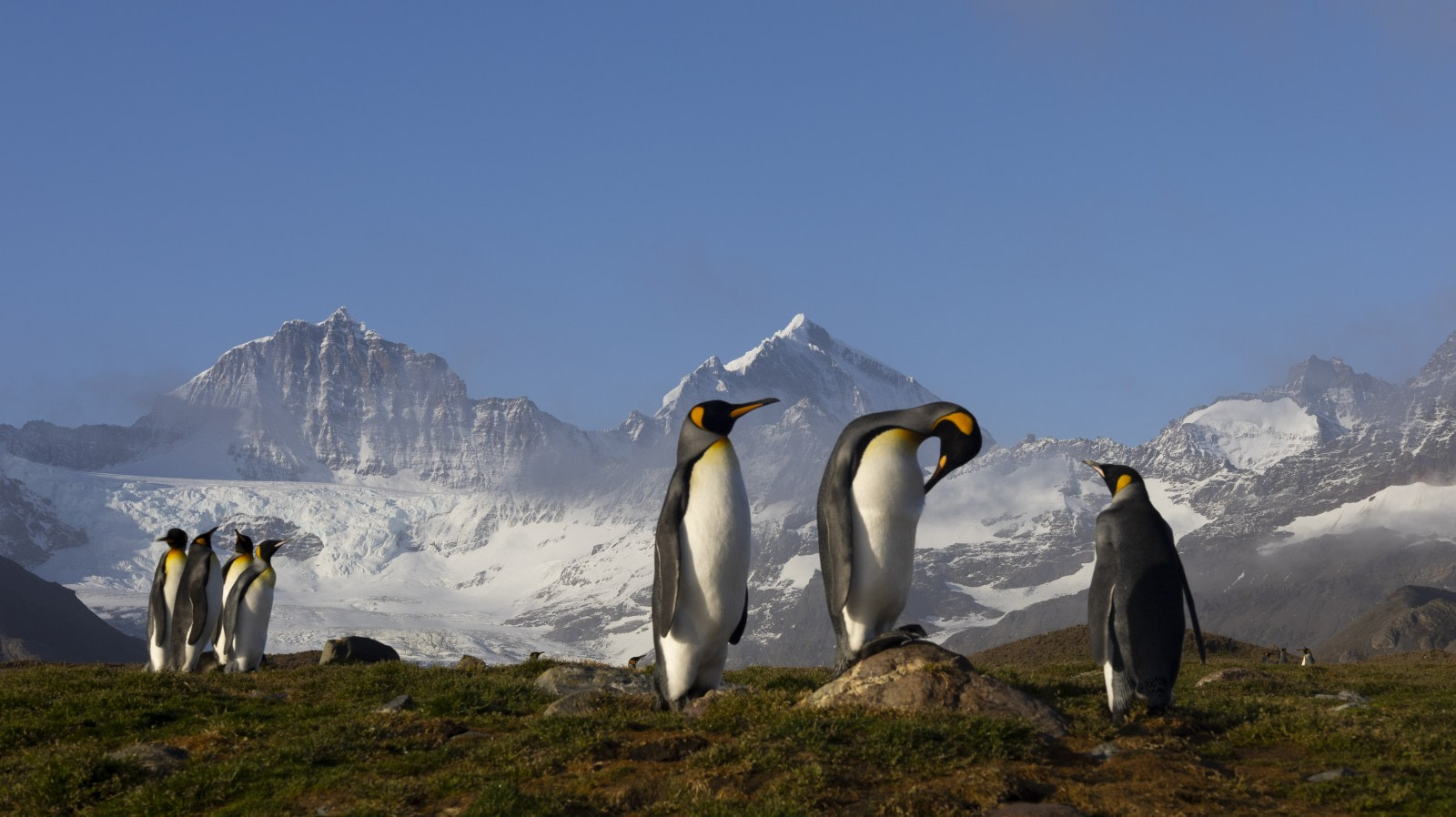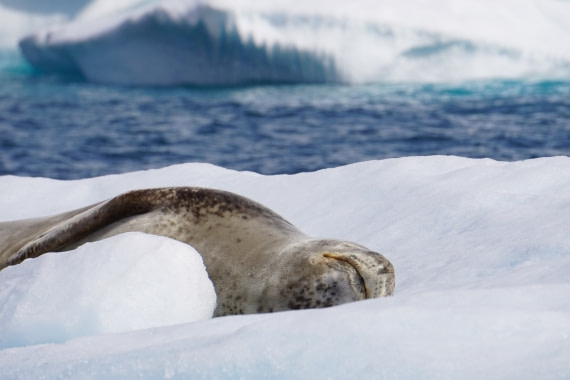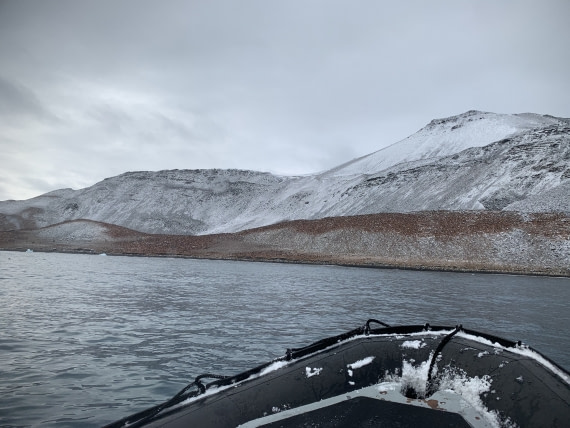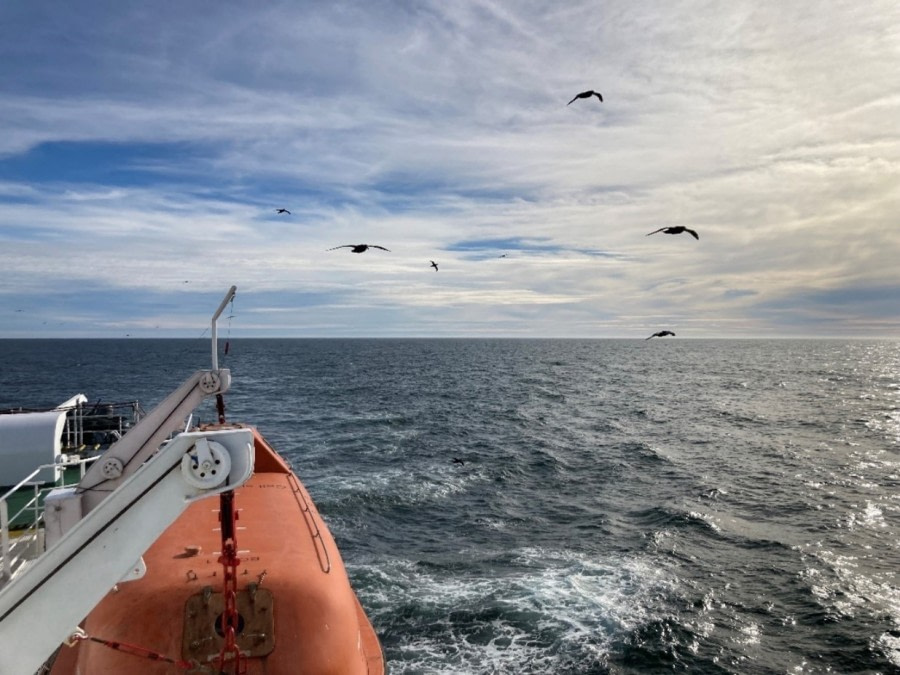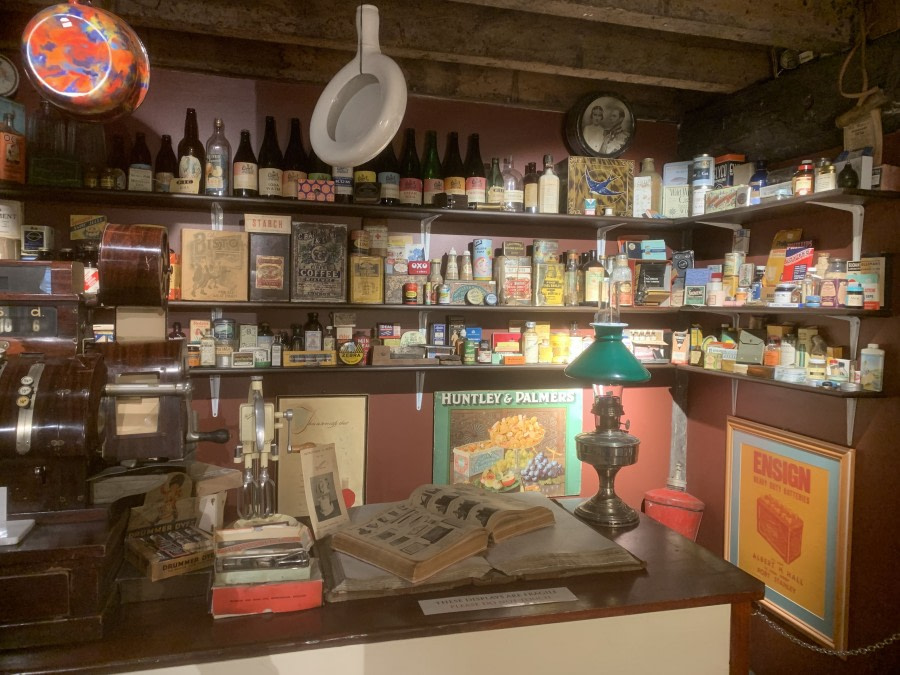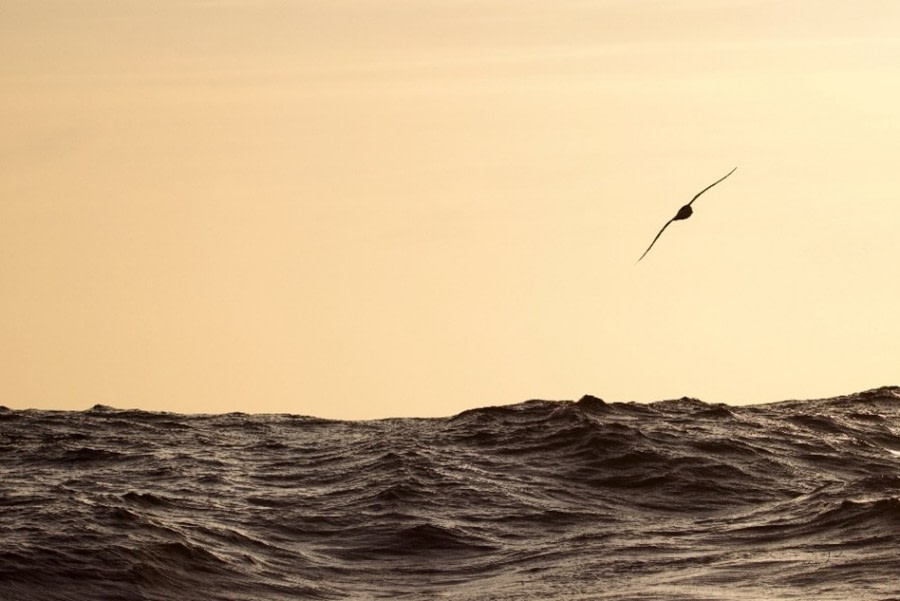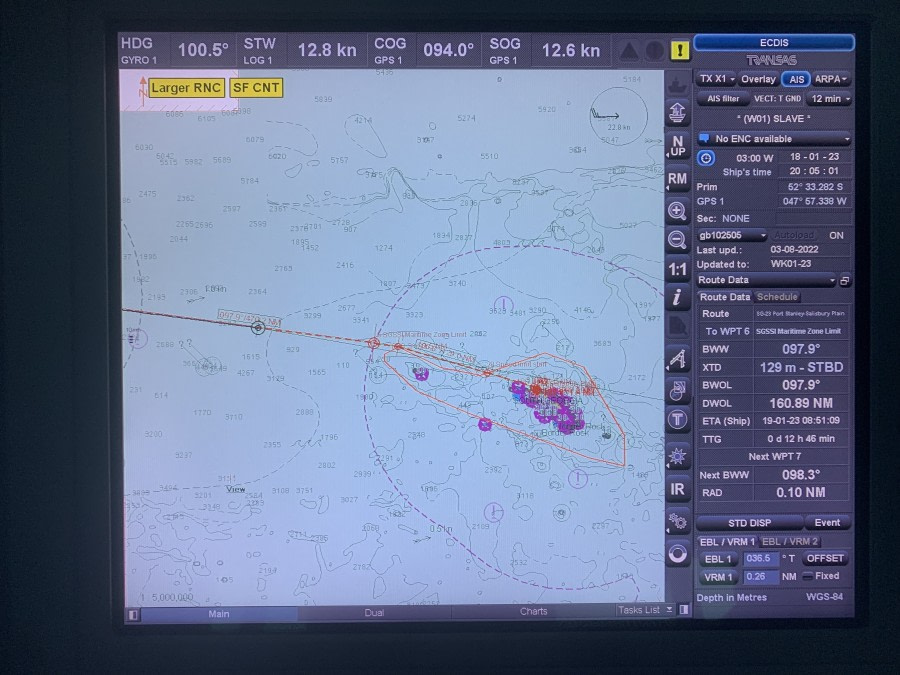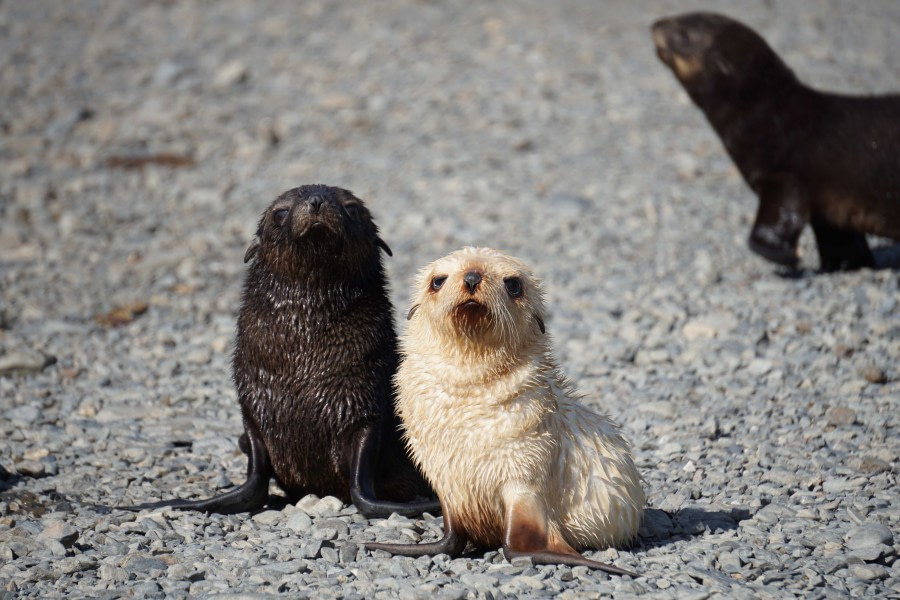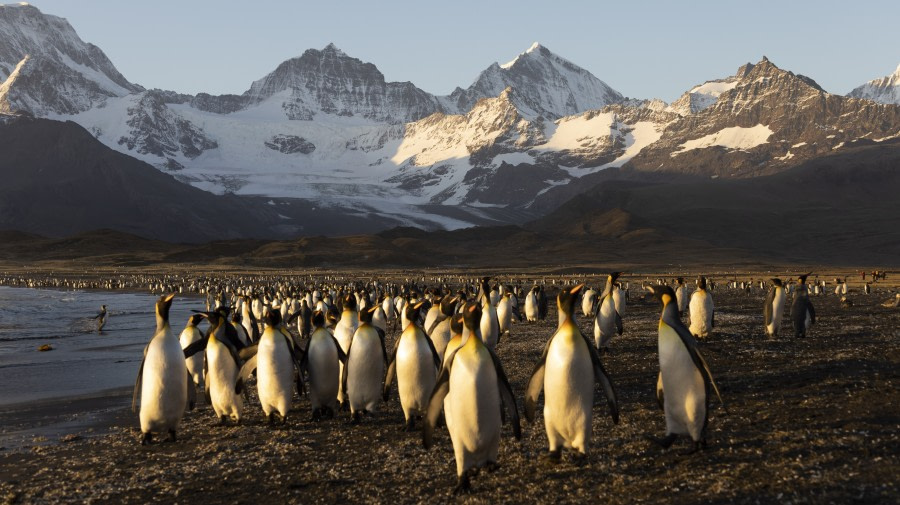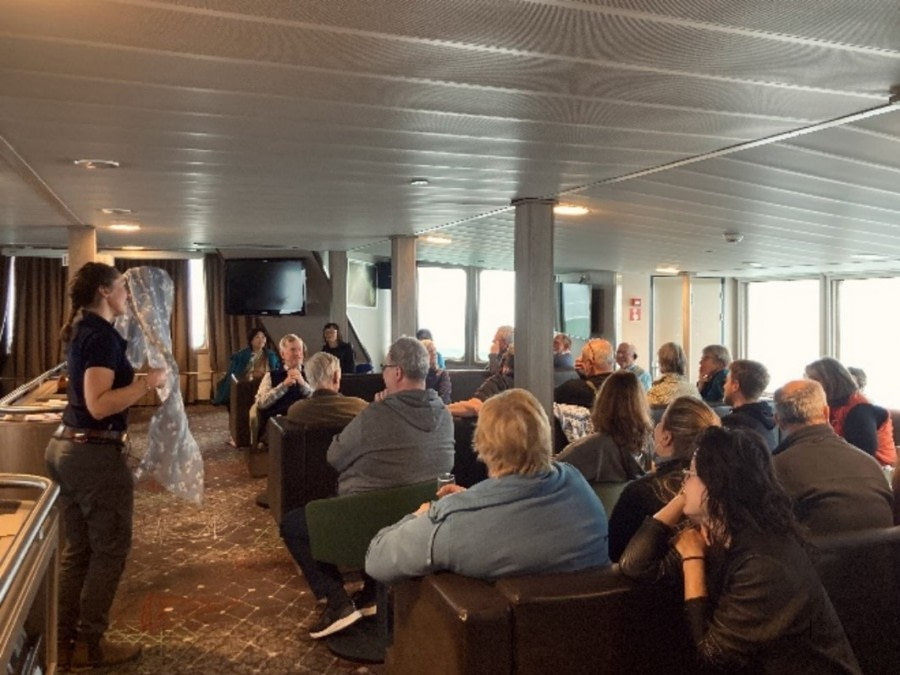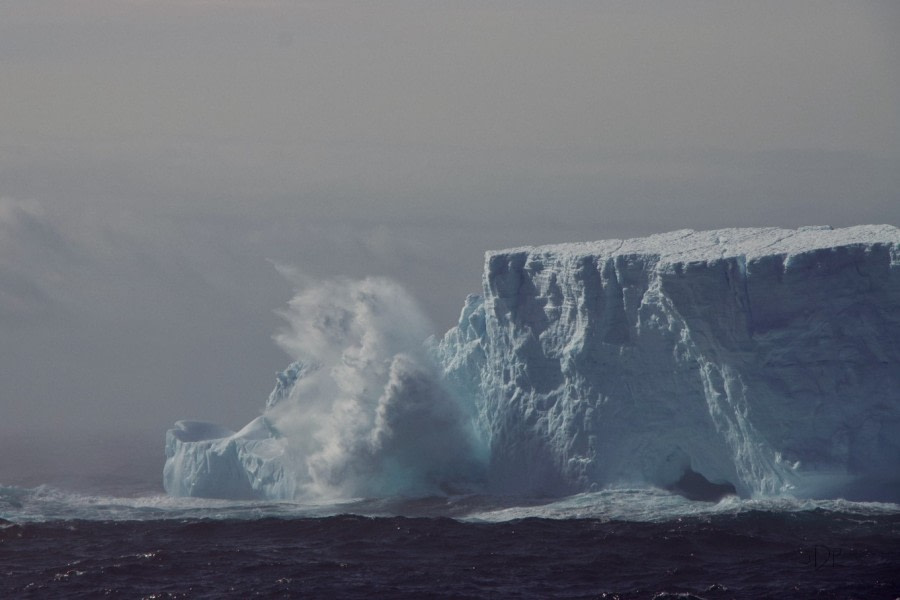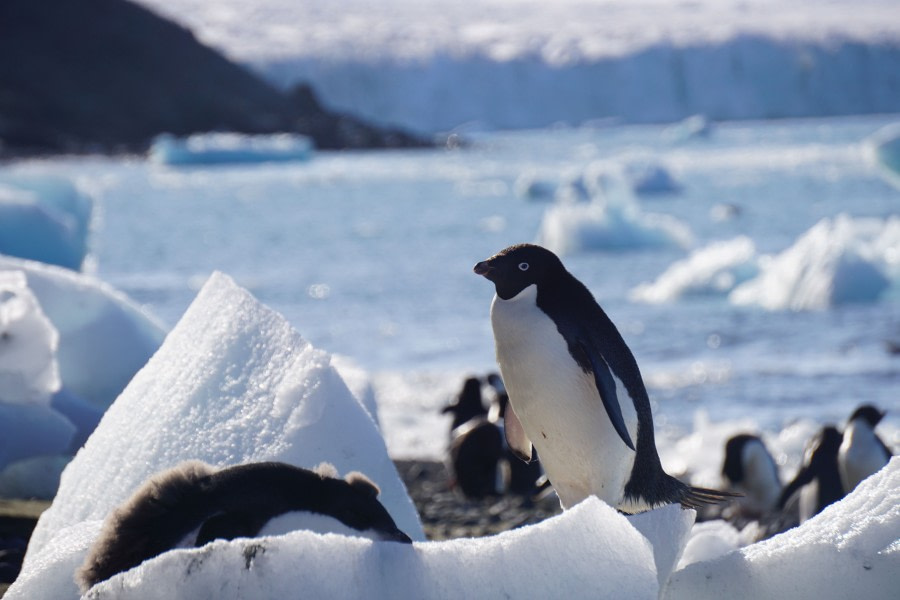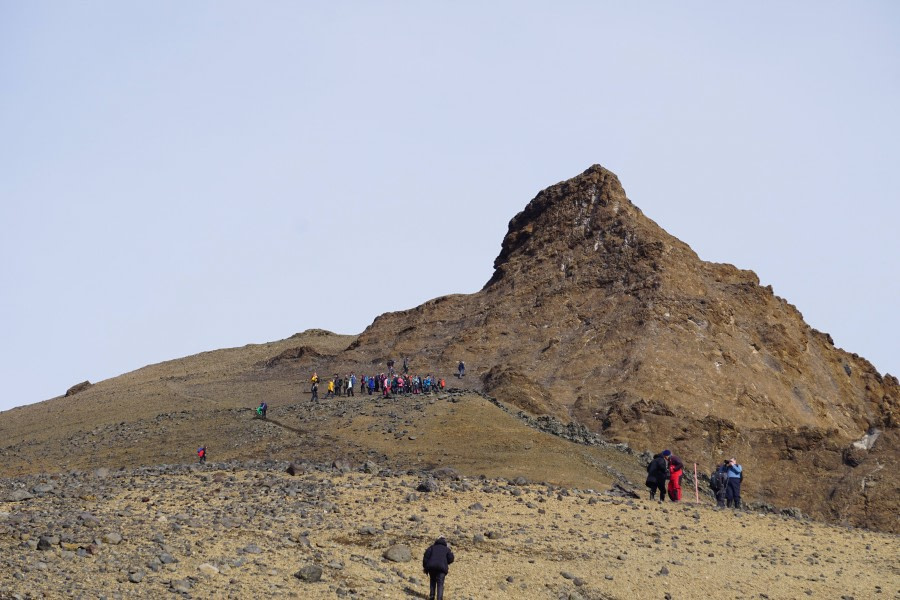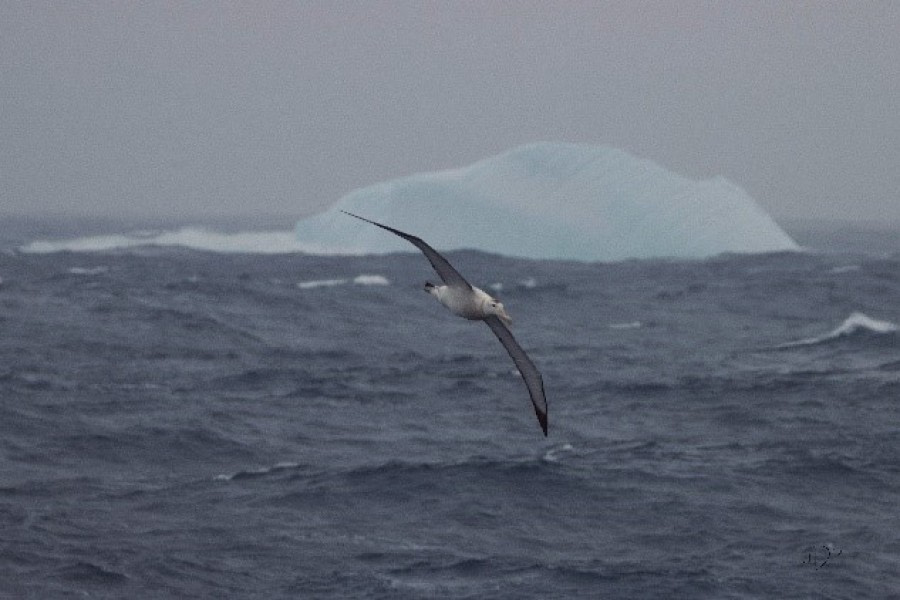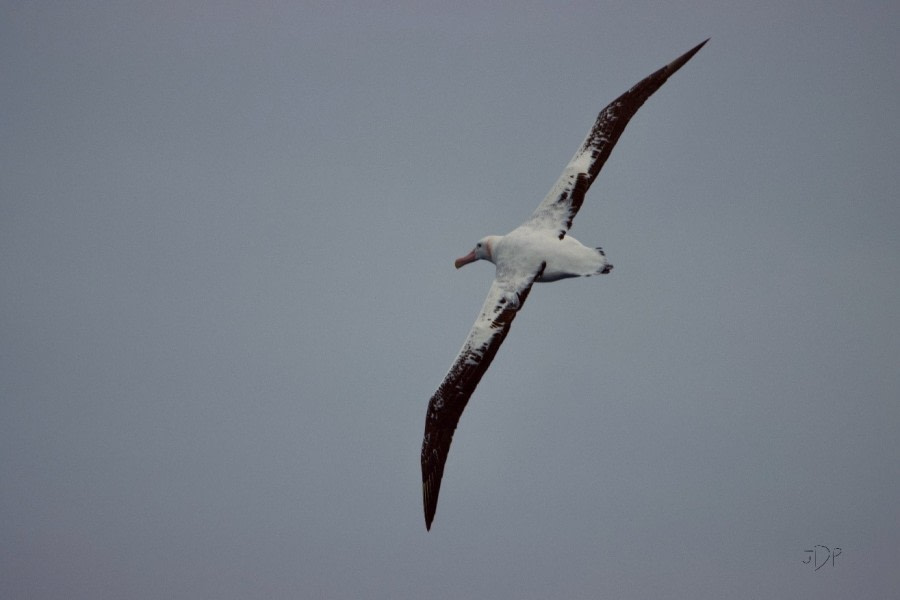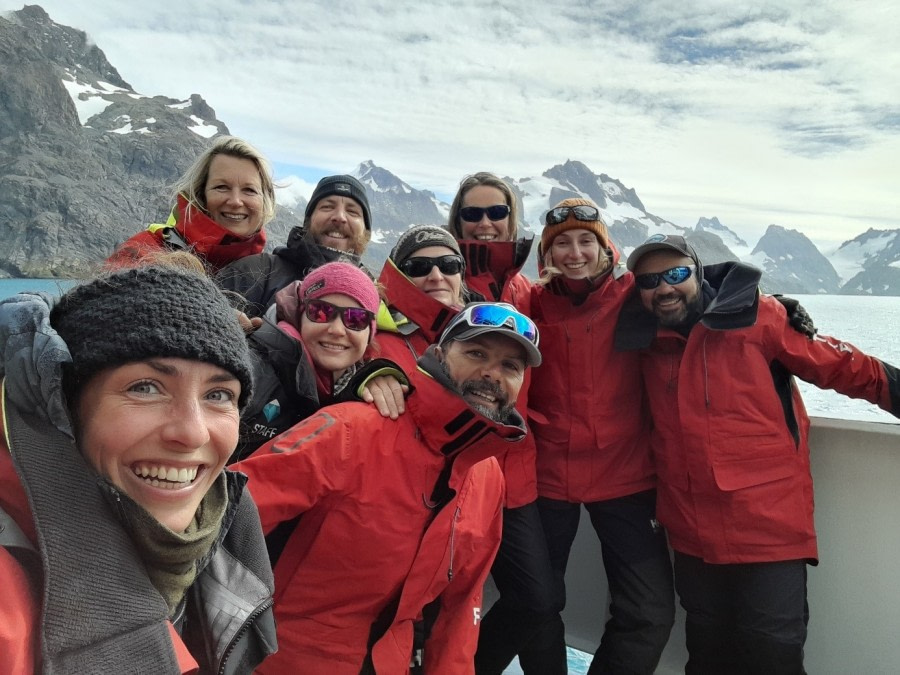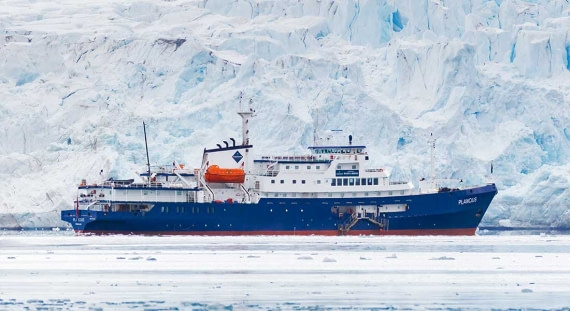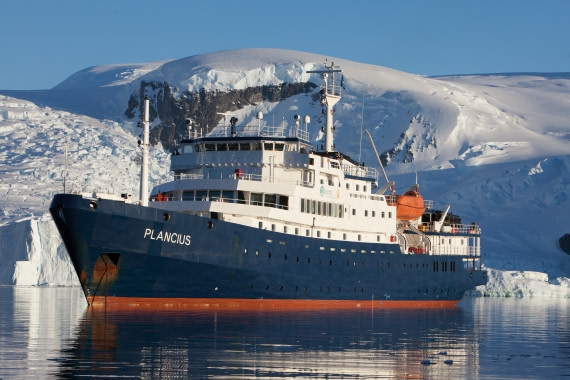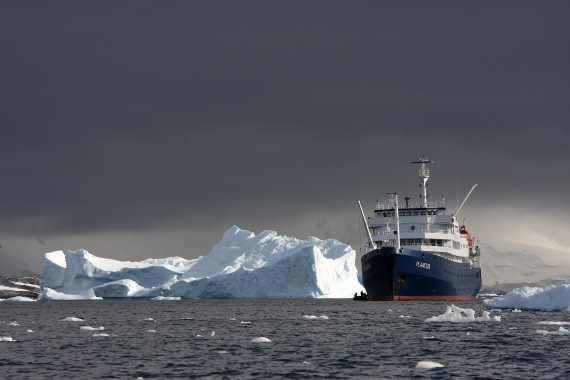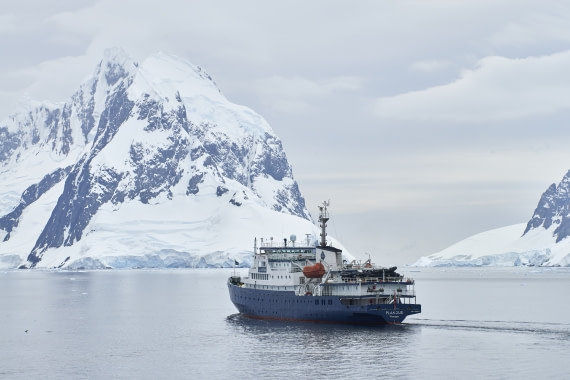| Datum: |
18.01.2023 |
| Positie: |
52°19,4'S / 050°38,2'W |
| Wind: |
WNW5 |
| Weer: |
bewolkt |
| Luchttemperatuur: |
+14 |
We brengen onze vijfde dag aan boord door in een gebied van de Zuid-Atlantische Oceaan dat langs de noordgrens van de Scotia Sea ligt, een gebied dat bekend staat om zijn verraderlijke wateren. Dit was onze eerste volle dag op zee na ons bezoek aan de Falklandeilanden en de tweede dag in onze oversteek van de Falklandeilanden naar South Georgia.
We verlieten de continentale wateren kort nadat we de dag ervoor Port Stanley hadden verlaten en kwamen in echte oceaanwateren terecht waar de dieptes kunnen oplopen tot 4 km. Hierdoor konden we echte pelagische levensvormen rond het schip zien, zoals veel Wandering Albatross, Wenkbrauwalbatros en verschillende andere soorten vogels, voornamelijk Prionen en andere soorten Albatrossen. Dit maakte onze navigatie zeer aangenaam en gezien de kalme omstandigheden van de oceaan genoten we van een heerlijke ochtend met een zonnig dek en blauwe luchten.
Aan het begin van de dag werd het ontbijt aan boord geserveerd. Op deze dag hadden de meesten van ons hun "zeebenen" al ontwikkeld en de meesten van ons namen deel aan de oproep.
Voor deze dag had onze expeditiestaf een reeks informatieve lezingen voorbereid over verschillende onderwerpen die de omgeving beschrijven waar we ons bevinden. De eerste van de lezingen in de ochtend was een presentatie over pinguïns, aangeboden door onze biologe Steffi. In deze presentatie beschreef ze de verschillende soorten pinguïns, hun leefgebieden en strategieën om de intense kou van de Antarctische en sub-Antarctische wateren te overleven.
Kort daarna, tijdens de tweede helft van de ochtend, hadden we onze tweede lezing, gepresenteerd door dierenarts en bioloog Pierre. Zijn presentatie was getiteld "Bultruggen". Dit was een uitstekende introductie voor alle niet-experts over het leven en de gewoonten van deze prachtige walvisachtigen die de oceanen van de wereld bevolken. In zijn presentatie besteedde Pierre speciale aandacht aan het beschrijven van alle aspecten van de levenscyclus van walvissen, hun migraties, hun voedingsgewoonten en de gevaren die hen kunnen bedreigen. Hij liet ons verschillende video's en geluiden zien van zijn levendige ervaringen met bultruggen.
De lunch werd aan boord geserveerd om 12:30 uur en op dit tijdstip van de dag waren we erg blij om meer gasten te zien aanschuiven in het restaurant, ook al hadden we niet langer rustig water. Sinds de vroege ochtend hadden we te maken met zware deining en daardoor rolde het schip af en toe.
Voor vandaag stond om 14:00 uur de tewaterlating van een drijvende sonde gepland. Daarom waren we uitgenodigd om te zien hoe dit apparaat werd uitgezet in de open oceaan. Argo is een internationaal samenwerkingsprogramma dat gebruik maakt van profileringsdrijvers om verschillende parameters van de oceanen te observeren, zoals temperatuur, zoutgehalte, stromingen en bio-optische eigenschappen (ga voor meer informatie naar http://www.argo.net). Zodra de drijvers aan het wateroppervlak zijn uitgezet, "zinken" de drijvers naar een parkeerdiepte van 1000 m. Na 10 dagen gaan ze dieper naar een nieuwe parkeerdiepte van 2000 m waar ze nog eens 10 dagen blijven. Daarna komen de drijvers naar het oppervlak, leveren hun gegevens aan onderzoekscentra en beginnen aan een nieuwe cyclus van 20 dagen.
De lancering was een succes en we waren allemaal erg nieuwsgierig om meer te weten te komen over het programma en de bevindingen van dit programma.
Nadat de Argo te water was gelaten, gingen we verder met ons programma van presentaties voor de middag. Om 15:00 uur gaf onze expeditiegids Josh een interessant overzicht over de eerste ontdekkingsreizigers die de Zuidpool bereikten, het Noorse team onder leiding van Roald Amundsen en later het Britse team onder leiding van Robert Falcon Scott. Tijdens zijn uiteenzetting vertelde Josh over een aantal feiten van deze zogenaamde "race naar de pool" en hoe het tragisch afliep voor Scott's groep. Deze presentatie bracht enkele hoogtepunten van het "heroïsche" tijdperk van Antarctische exploratie.
Na deze leuke presentatie kregen we de tweede presentatie van de namiddag, deze keer gegeven door Eduardo, onze assistent-expeditieleider. Onder de titel "De verkenning van de bodem van de oceanen" nam Eduardo ons mee op een ontdekkingsreis langs drie belangrijke onderwerpen. In het eerste deel beschreef hij de zeekenmerken die we onder de golven op de bodem van de oceanen tegenkomen. In het tweede deel sprak hij over de geschiedenis van de verkenning van de bodem van de oceanen, waarbij hij grote expedities zoals die van de HMS Challenger en de modernste met diepzeevoertuigen aanstipte. Tot slot presenteerde hij enkele van de belangrijkste ontdekkingen die al deze activiteiten de wetenschappelijke gemeenschap hebben gebracht en hoe deze ontdekkingen hebben geholpen om de geologie van de planeet Aarde in het verleden en in de toekomst te begrijpen. Daarnaast sprak hij over het belang van de levensvormen die diep onder de golven zijn ontdekt, waarbij hij de nadruk legde op de hydrothermale bronnen.
In de vroege avond hadden we onze dagelijkse samenvatting, waarbij Ali het weer en de plannen voor de volgende dag presenteerde. Daarnaast gaf Eduardo een samenvatting over de Argo-drijvers, Annelou gaf een samenvatting over de geschiedenis van de Aurora-eilanden, een groep eilanden die door vroege navigators in de Zuid-Atlantische Oceaan werden gezocht, maar nooit meer werden gezien. De laatste recapitulatie werd gepresenteerd door Elodie die sprak over de wolkenformaties die we boven de bergen van South Georgia zien. Kort na deze activiteit werd het diner geserveerd in het restaurant. s Nachts zeilden we verder richting South Georgia onder een donkere sterrenloze nacht.
